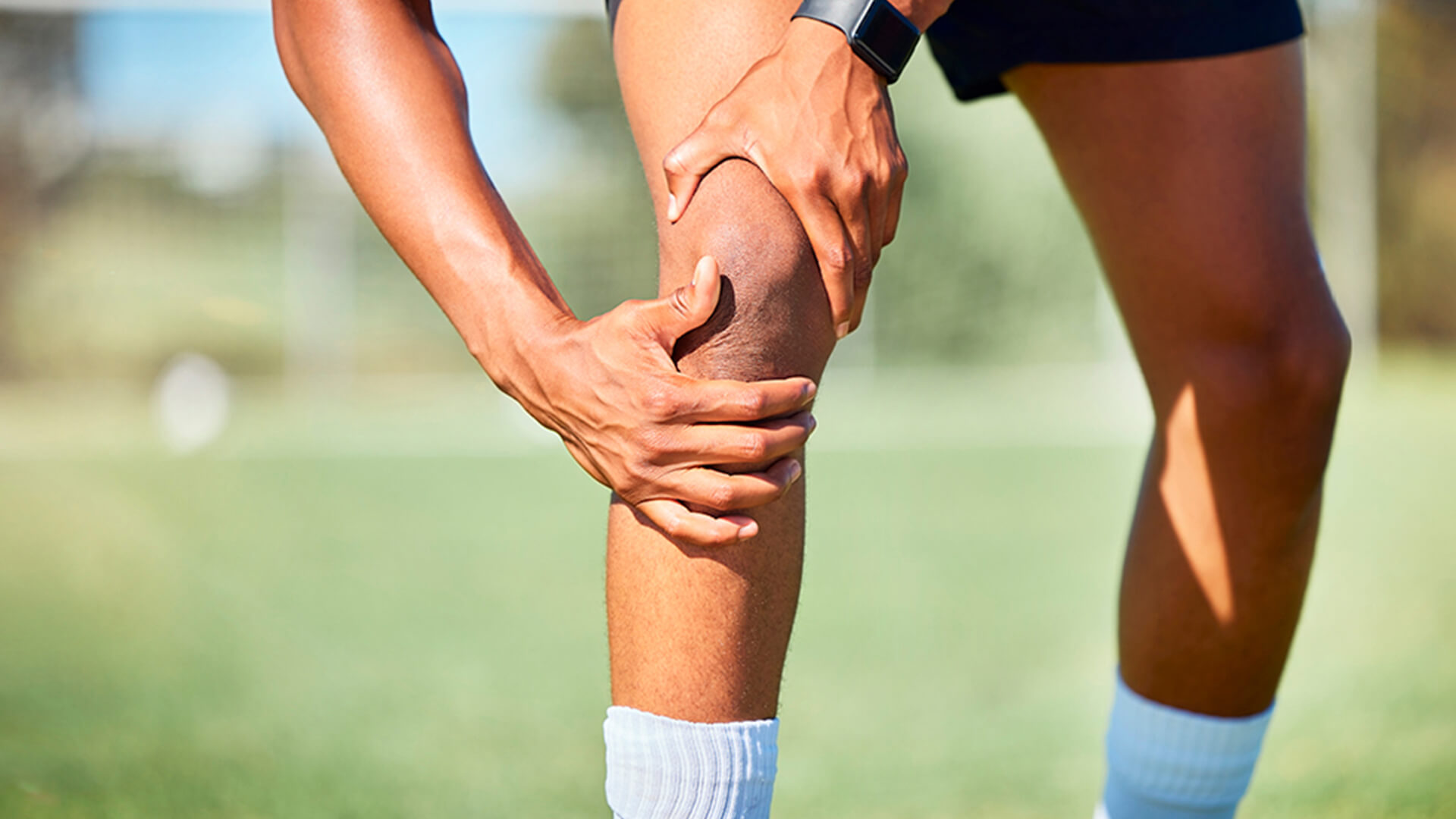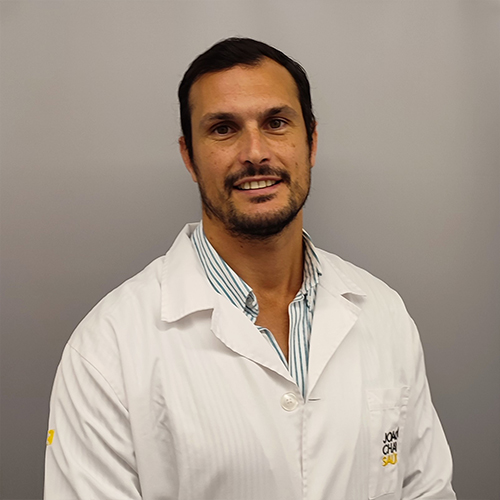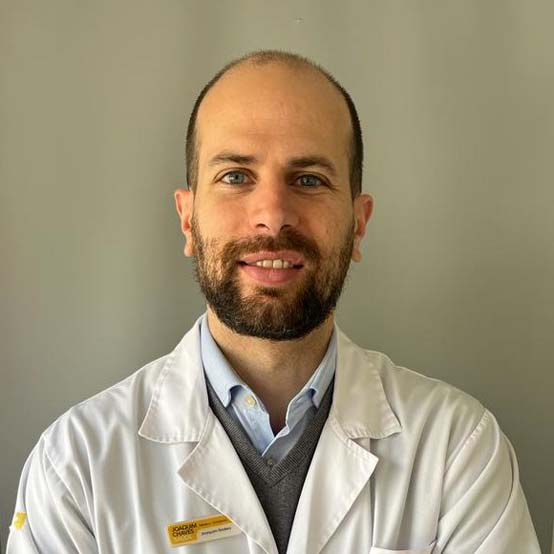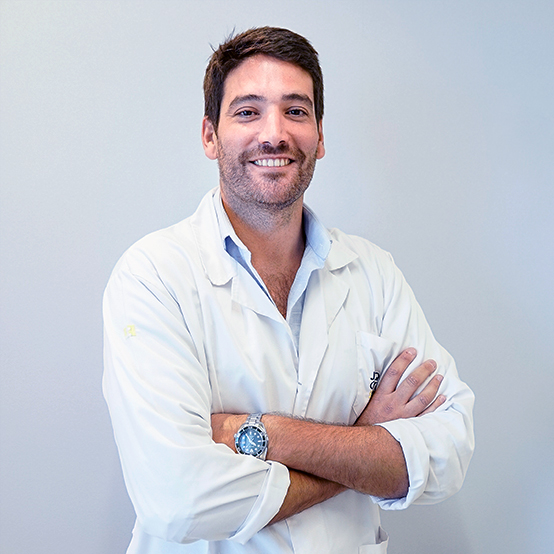Anterior cruciate ligament (ACL) injuries are more common in young people and account for almost half of all knee injuries. The growing trend of sports participation has led to an increase in this type of injury and, when it happens, it can be serious if not treated successfully. Find out what an anterior cruciate ligament injury is and the available treatments.
What is an anterior cruciate ligament injury?
An anterior cruciate ligament injury is a common problem that affects the knee, more specifically one of the main ligaments connecting the thigh bone (femur) to the shin bone (tibia). This ligament plays an important role in the rotational e anteroposterior stability of the knee joint.
ACL injuries occur when the ligament is stretched beyond its normal capacity, causing a total or partial tear, especially as a consequence of sudden movements, such as rapid changes in direction or excessive knee rotation.
What are the symptoms of anterior cruciate ligament injuries?
The symptoms of anterior cruciate ligament injuries can vary depending on the severity of the tear, but usually include:
Knee pain
Pain can be sharp and intense when the injury occurs, or can develop gradually over time.
Inflammation
The injured knee can swell immediately after the injury, due to the accumulation of intra-articular fluid.
Knee instability
The patient may feel that the knee is unstable or could buckle at any time, especially when performing actions that require changes in direction.
Limited range of motion
The ability to move the knee may become limited, especially when the patient tries to fully bend the knee.
Popping sensation
Some patients report hearing or feeling the knee pop, which usually occurs at the time of the injury, as a result of the partial or total rupture of the anterior cruciate ligament.
What causes anterior cruciate ligament injuries?
Anterior cruciate ligament injuries are usually caused by sudden movements, traumas or excessive force applied to the knee. This injury can occur at any age, both in athletes and people who don’t practice sports. However, it is more common in high-impact sports, as these make more use of the knee joints. The principal causes include:
Changes in direction
One of the leading causes of anterior cruciate ligament injuries is fast changes in direction during sports, such as skiing, rugby, soccer and basketball. When sudden rotation occurs during movement, the ligament can stretch beyond its capacity, causing a partial or total tear.
Improper landing technique
Improper landing after jumping can put too much pressure on the anterior cruciate ligament, thereby causing injury.
Direct trauma
Extreme and direct impact to the knee, for example in car accidents, falls or sprains, can injure the anterior cruciate ligament.
Biomechanical factor
Some biomechanical factors can increase the risk of injury to the anterior cruciate ligament, such as the anatomy of the knee itself, the area around the ligament, the angle of the joint or even muscle weakness.
How are anterior cruciate ligament injuries diagnosed?
The diagnosis of anterior cruciate ligament injuries is made by an Orthopaedist and involves a clinical evaluation, history of the injury and imaging exams.
Clinica l evaluation
The physician will conduct a full clinical evaluation, examining the injured knee and checking the symptoms reported by the patient. During this examination, the physician may perform specific tests to assess the knee’s stability, such as the Lachman test and Pivot Shift test. These tests involve carefully moving the knee to detect anterior or rotatory instability.
History of the injury
The physician will also take into account the history of the patient’s injury, including the description of the events that caused it, which movements were performed and the associated symptoms.
Imaging exam
Magnetic resonance imaging (MRI) is the most suitable imaging exam to diagnose an anterior cruciate ligament injury, and usually enables confirmation of the diagnosis. This exam provides detailed images of the ligaments, cartilage and other structures in the knee, allowing the physician to assess the integrity of the anterior cruciate ligament.
How are anterior cruciate ligament injuries treated?
The treatment for anterior cruciate ligament injuries can vary and will depend on the severity of the injury, the patient’s individual needs and the desired level of physical activity. Treatment options may include:
Physiotherapy
Physiotherapy is crucial to treat anterior cruciate ligament injuries, to strengthen the muscles around the knee, improve stability, reduce swelling and improve the range of motion.
Orthotics
In cases of intense instability, orthoses, such as knee braces, can help support and stabilise the knee, supporting joint function, especially during rehabilitation and physical activities.
Surgery
Active patients may require reconstructive surgery of the anterior cruciate ligament to restore knee function and reduce the risk of cartilage wear and secondary meniscal tear. This procedure involves removing a graft of healthy tissue (normally from the hamstring or patellar tendon), and using it to replace the damaged ligament. Recovery can be slow and is highly dependent on post-operative physiotherapy, but sports activities can usually be resumed after 6 to 8 months.
Treating anterior cruciate ligament injuries at Joaquim Chaves Saúde
At Joaquim Chaves Saúde, you will find a highly specialised team supported by state-of-the-art technology to provide a quick, accurate and comprehensive diagnosis. Whether through specialised physiotherapy or surgery, our goal is to restore stability to your knee and help you resume your daily activities. Schedule your consultation now and get your quality of life back!






